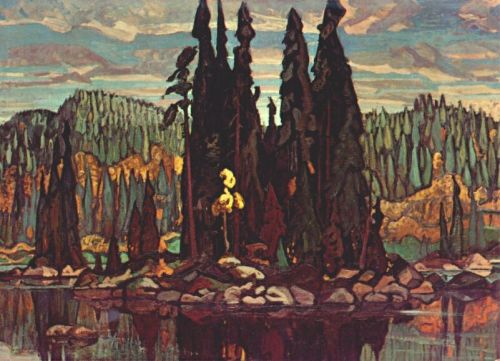It’s the 100thanniversary of Armistice Day and the 80th anniversary of Kristallnacht this weekend.
 |
|
Olympic with Returned Soldiers, 1919, Arthur Lismer, courtesy Canadian War Museum
|
I knew a World War I veteran. George Vanderhoek was elderly when I met him in 1980; he was a gentle, fatherly influence when I was in my first ‘grown up’ job. I feel now as if my memories of him reach into the mists of time. It saddens me.
Sunday marks the 100th anniversary of Armistice Day. This was the end of the “The War That Will End War,” as H.G. Wells mistakenly called it. Ironically, tonight is the 80th anniversary of Kristallnacht, showing just how vain a hope peace can be.
 |
|
Study for Sappers at Work: A Canadian Tunnelling Company, Hill 60, St Eloi, 1918, David Bomberg, courtesy Imperial War Museum
|
There have been some horrible times to be alive in human history. The period from 1918 to 1948 ranks among the worst for Europeans and Russians. It was an age of massive dislocation, death, war, and genocide. Asia eventually followed Europe’s lead in the next generation, with Mao Zedong and Pol Pot killing off their countrymen. In the modern era we’ve witnessed repeated African genocides. It’s enough to make you weep.
 |
|
Charge of Flowerdew’s Squadron, 1918, Alfred Munnings, courtesy Canadian War Museum
|
Can I draw any conclusions from this seemingly endless wave of terror? None other than that humans, in an unredeemed state, are capable of unimaginable cruelty. That knowledge is always tempered with the understanding that, at the same time, there are people of great compassion who intervene even when the fight isn’t their own. We called them heroes back then.
 |
|
The Resurrection of the Soldiers, 1927–1932, Sir Stanley Spencer, courtesy Sandham Memorial Chapel
|
We entered the Great War late, because it wasn’t our fight. The Commonwealth countries, tied to Great Britain, were in it from the beginning. But in either case, soldiers were volunteering to fix a problem that had nothing to do with them or their country.
Prudence Heward, of whom I wrote this week, was one of many artists who dropped their brushes and went to the aid of Britain. A.Y. Jackson, Lawren Harris and Fred Varley came from Canada; Arthur Streeton from Australia. Of course, many British artists served as well, including Stanley Spencer, David Bomberg and Alfred Munnings. And American poet Joyce Kilmer was killed at the Second Battle of the Marne.
 |
|
Mount St Quentin, 1918, Arthur Streeton, courtesy Melbourne Museum
|
Some of these artists were attached as war illustrators (as Winslow Homer had done in our own Civil War). Some just picked up a musket and joined up. Their calling in art was subservient to their calling as human beings.
WW1 was the last of a particularly heinous kind of war, the kind where rulers used their citizenry in an elaborate game of chess. It was replaced by something worse. “After the ‘war to end war’, they seem to have been in Paris at making the ‘Peace to end Peace’,” wrote British staff officer Archibald Wavell in a sadly prescient comment.
 |
|
Houses of Ypres, 1917, A. Y. Jackson, courtesy Canadian War Museum
|
Years ago, my Australian cousin Mary taught me to make Anzac biscuits. These cookies were made for the Australian and New Zealand Army Corps during the Great War, because they would survive the long journey around the globe. I could spend this centenary of Armistice Day thinking futile thoughts, or I can bake a batch of Anzacs and remember the heroism of men and women from around the globe. That, after all, is the second great lesson of the twentieth century.



